Dolmades is Greek for “stuffed grape leaves.” All the food groups are represented in this vegan variation: a grain (rice), vegetables (grape leaf and onion), a protein (pine nuts), a fruit (lemon), and spices (herbs). The result? A neat, portable whole meal. Keyword is portable, not fast! I suggest you make a large batch of these when you have a free afternoon. Freeze some, put the others in the fridge and eat them for breakfast at room temperature over the next few days.
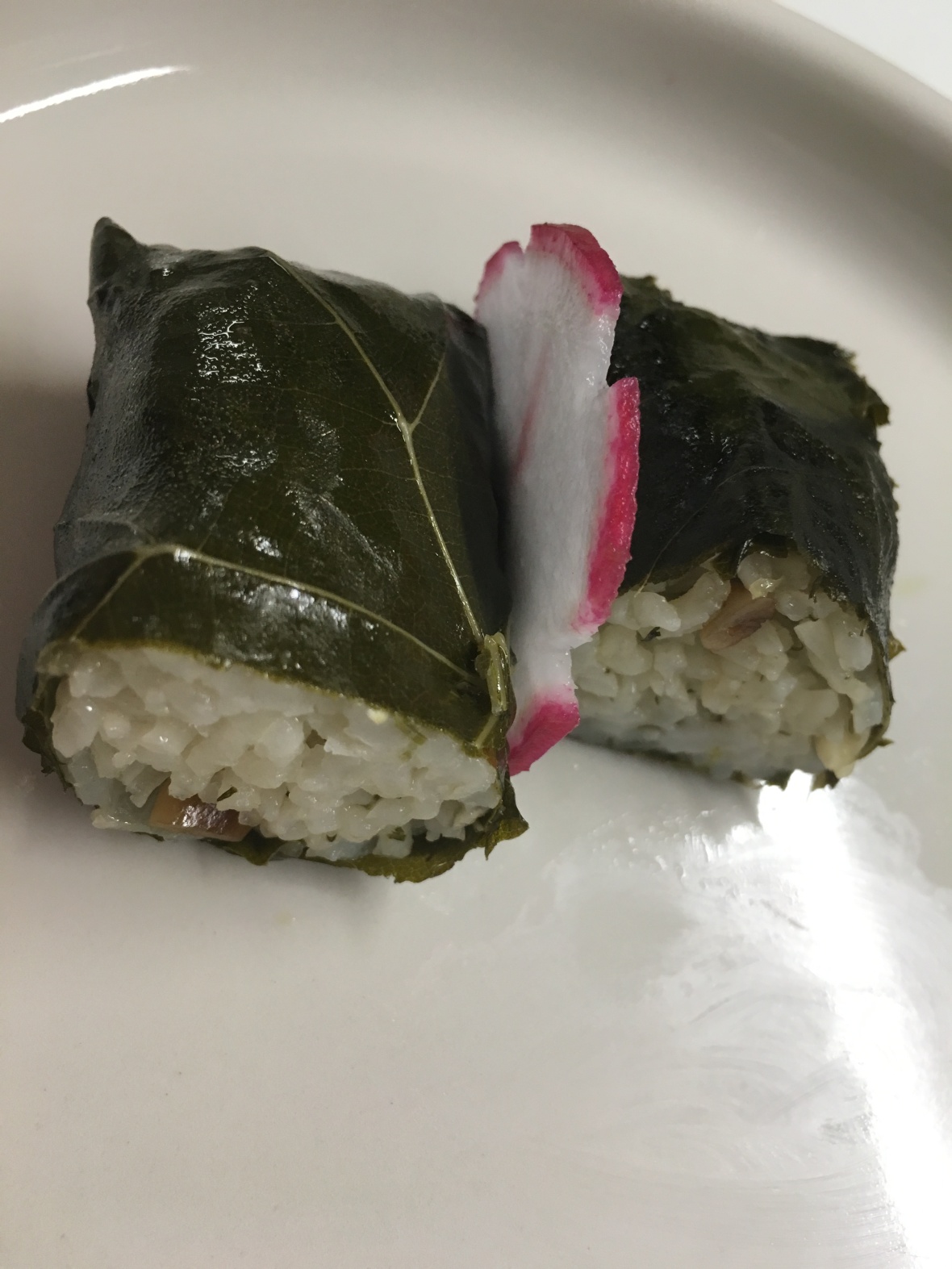
makes about 25 stuffed grape leaves
INgredients
¼ cup pine nuts
¾ cup long grain white rice
1 small onion, minced
¼ cup fresh dill, chopped
1/8 cup fresh mint, chopped
3 Tablespoons freshly squeezed lemon juice
½ Tablespoon lemon zest
1 cup vegetable broth (yellow is best)
25 large grape leaves (fresh or jarred)
fine sea salt and fresh ground pepper to taste
1 Tablespoon coarse sea salt (for boiling the grape leaves)
¼ cup extra virgin olive oil (EVOO)
Pink radish for garnish when serving

Process
First of all, if you are picking and using fresh grape leaves, choose younger leaves and ones that are as large and wide as possible.
Use a stainless steel or cast iron skillet to toast the pine nuts. On a medium flame, use cooking chopsticks to turn the nuts, exposing all sides to the heat, until they begin to sweat and turn a light golden brown.
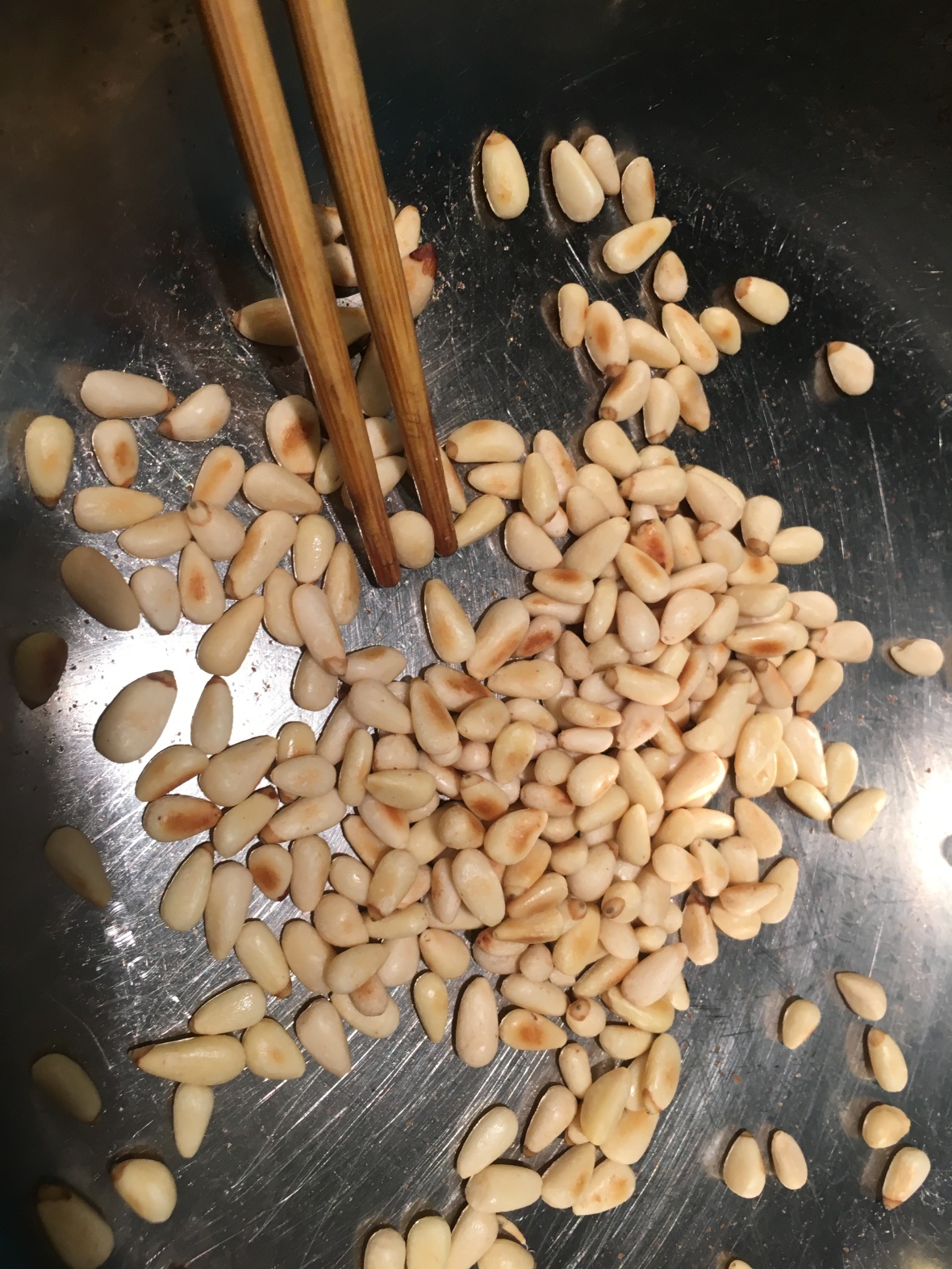
Remove them from the pan and set aside.
Heat a medium-sized heavy pot on a medium flame for about 30 seconds. Add half of the olive oil and warm it for about 20 seconds. Add the minced onion and sauté it until it becomes translucent and softens. Add the rice and stir it well until it is integrated with the onion, sautéing the two together for another minute or two. Pour in a half cup of the warm vegetable broth and lower the flame. Simmer the rice and onions uncovered for about 10 minutes until all the liquid is absorbed and the rice is al dente, partially cooked. Be careful not to cook the rice completely or the grape leaves will be mushy. Remove the pot from the flame.
Add the chopped dill, mint, pine nuts, 1 ½ Tablespoons of the lemon juice and the lemon zest to the pot.
Season with sea salt and pepper and stir well. Allow the rice mixture to cool to room temperature.
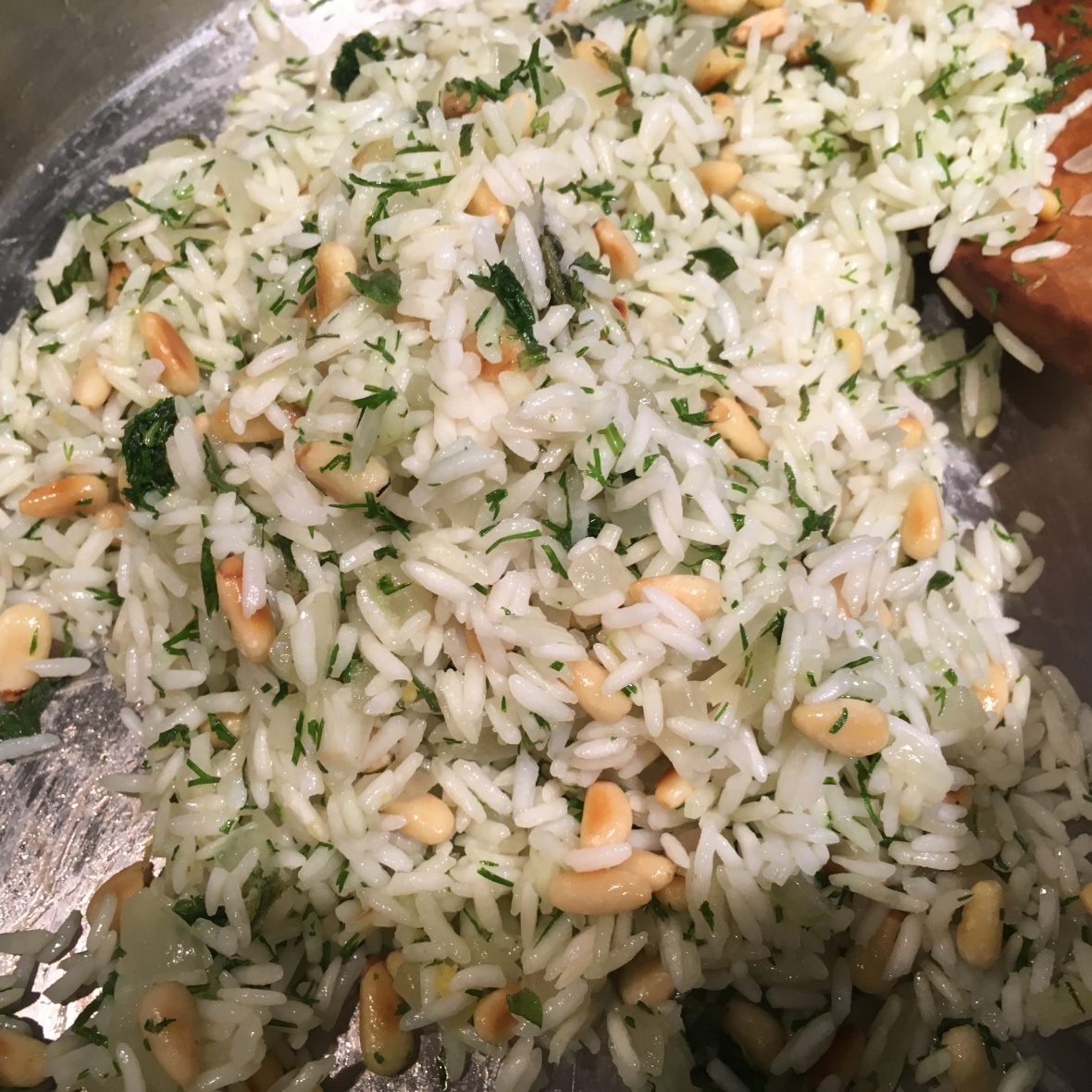
Fill a large pot with water, add a few pinches of coarse sea salt and bring to a boil. Trim any long stems from the grape leaves. Place the leaves in the water (about two at a time) and let them boil for about 3 minutes, until they are soft and more pliable. Remove them with a wire mesh skimmer and place them in cold water. Remove leaves from the water and pat dry.
Stuff and roll the grape leaves:
Note: if you find any grape leaves with holes, set them aside to line the pan you’ll use to cook the stuffed leaves.
Place a leaf on a flat surface with the shiny (smooth) side down, and the veiny or more textured side up. Place about 2 Tablespoons of the the rice filling at the base end of the leaf where the stem was.

Fold this base end of the leave over the filling and seal it by pressing it.
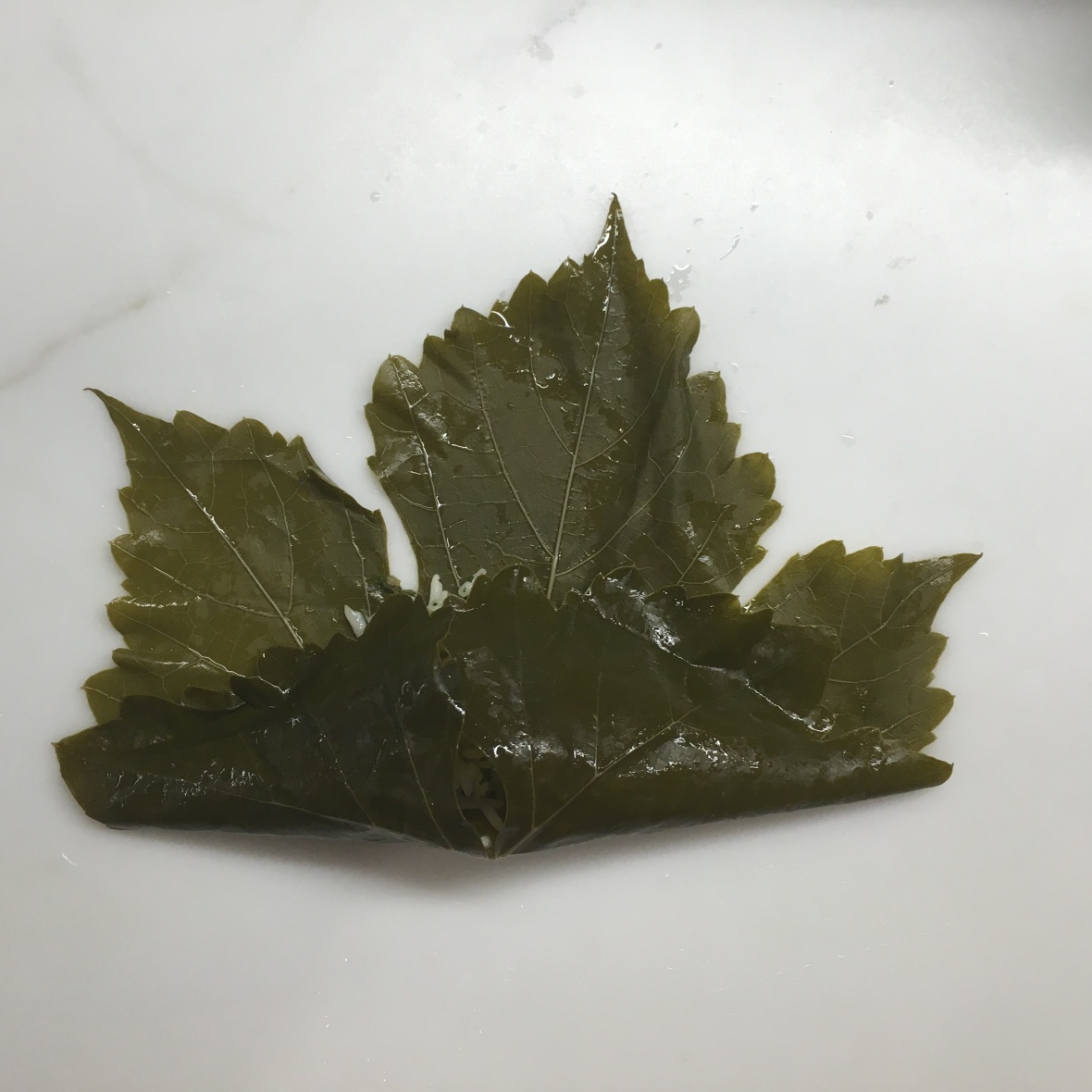
Fold the left and right sides of the leaf inward over the leaf that covers the filling.

Now continue rolling the leaf (without squeezing too hard as the rice needs a little elbow room since it will expand when cooked) until it forms a neat oblong cylinder. Seal it gently.

Repeat until all the leaves are stuffed.

Use a deep skillet; line it with any damaged leaves creating a bed. Place all the stuffed leaves in the pan, layering them and packing them tightly. This helps keep the leaves whole as they cook.
Add the remaining vegetable broth, olive oil, lemon juice and the stuffed leaves.
Gently heat the pan to a simmer; then lower the heat so the leaves cook slowly. Place an inverted heat-safe plate on top of the stuffed leaves as a weight, keeping them in place as they cook. Cover the pot and let the grape leaves cook for 30-40 minutes.
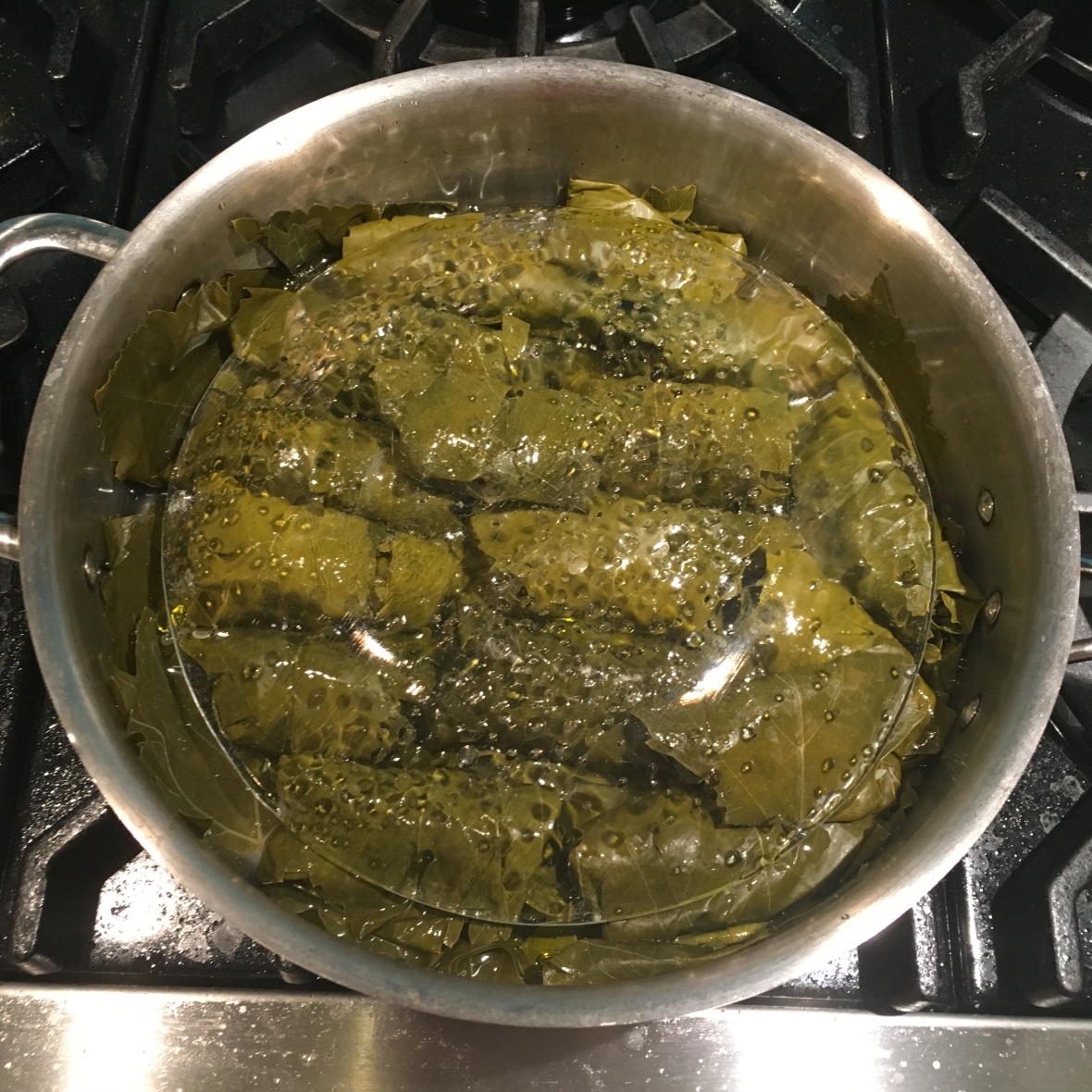
When they are tender, they are ready.
Serve them warm or cold with radish wheels, lemon wedges or plain yogurt.
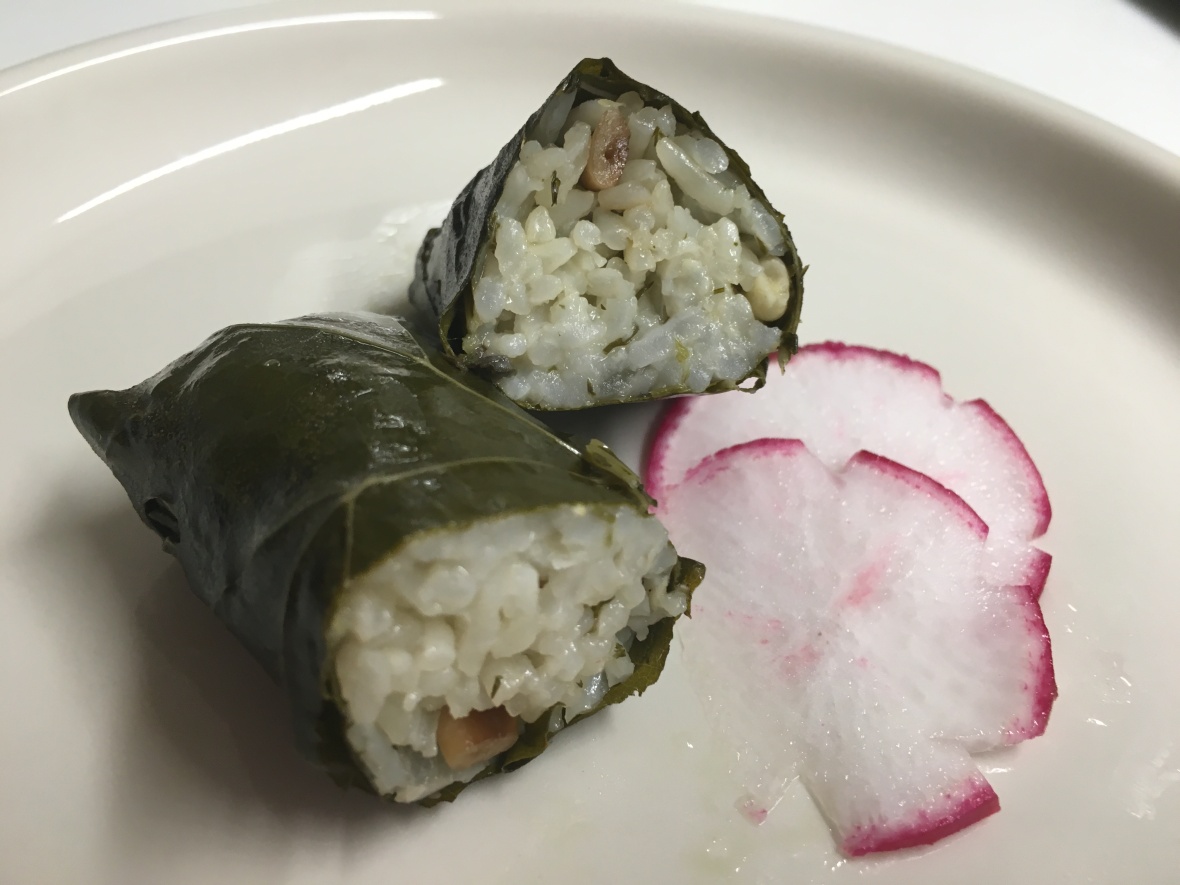
They will keep in the fridge for up to 5 days.
©Nancy Wolfson-Moche 2016
« last gasp of summer: zucchini stars with corn
spaghetti squash latkes »